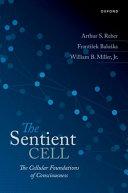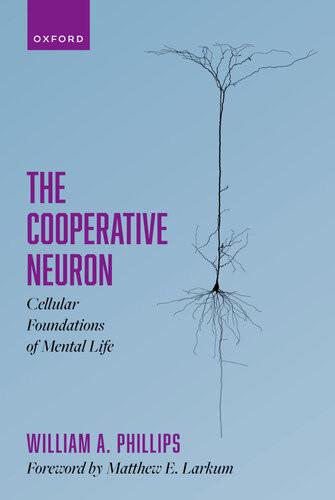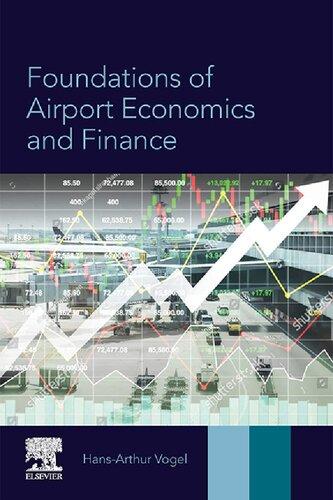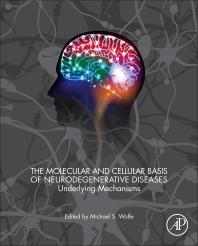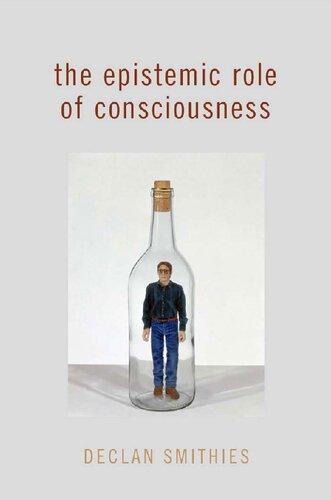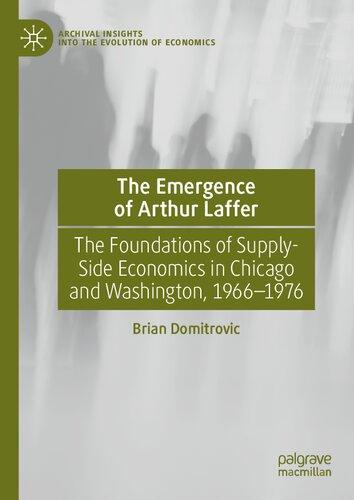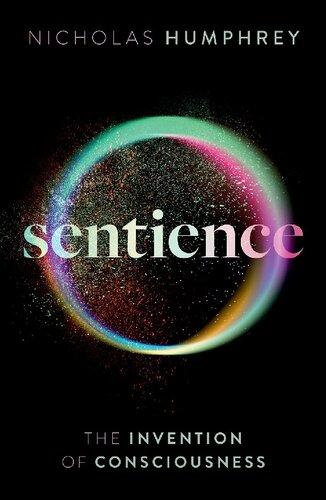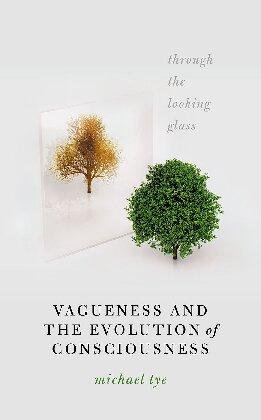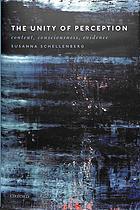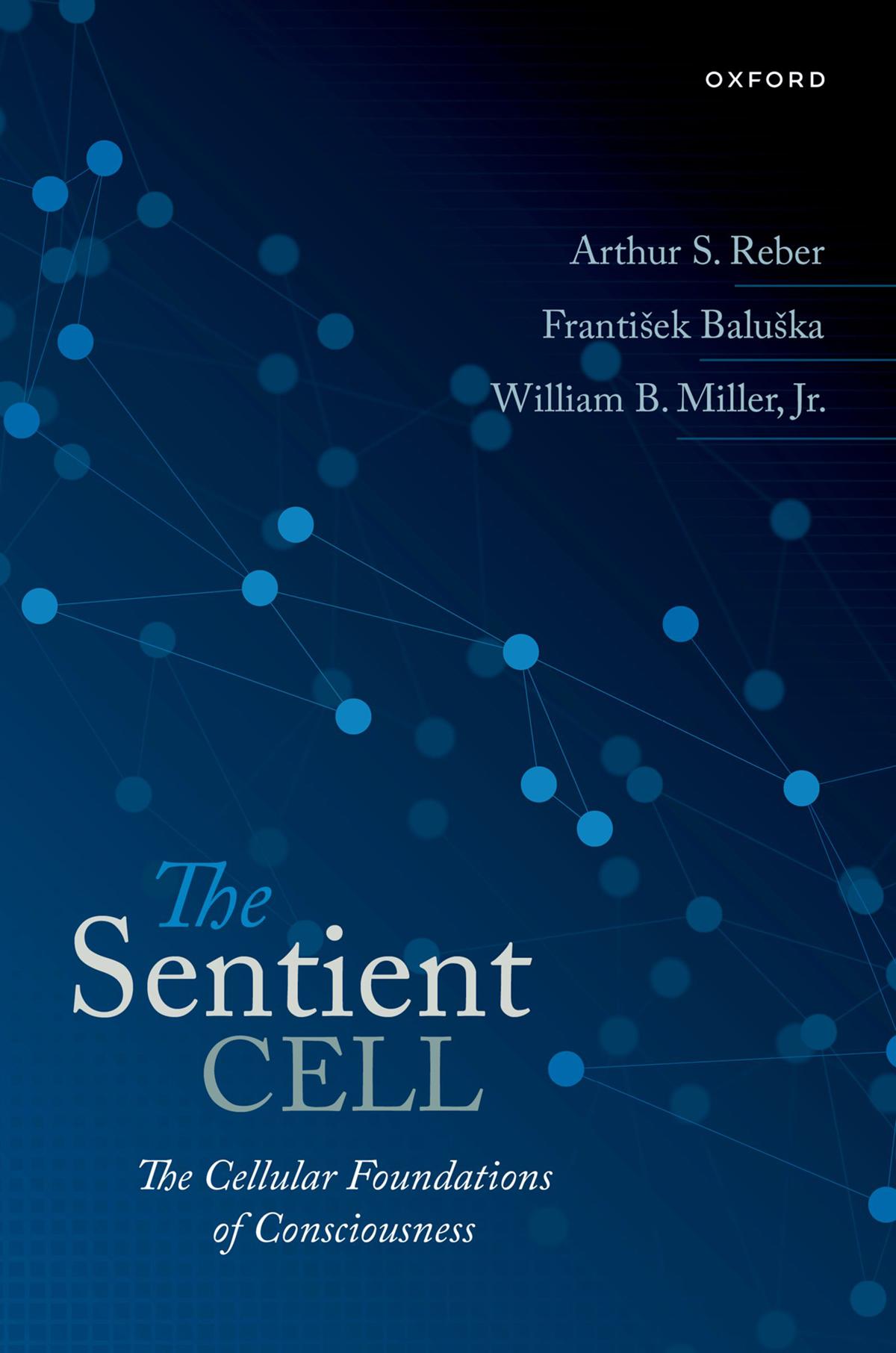The Sentient Cell
The Cellular Foundations ofConsciousness
Arthur S. Reber, František Baluška, William B. Miller Jr.
Great Clarendon Street, Oxford, OX2 6DP, United Kingdom
Oxford University Press is a department of the University of Oxford. It furthers the University’s objective of excellence in research, scholarship, and education by publishing worldwide. Oxford is a registered trade mark of Oxford University Press in the UK and in certain other countries
© Oxford University Press 2023
The moral rights of the authors have been asserted
First Edition published in 2023
All rights reserved. No part of this publication may be reproduced, stored in a retrieval system, or transmitted, in any form or by any means, without the prior permission in writing of Oxford University Press, or as expressly permitted by law, by licence or under terms agreed with the appropriate reprographics rights organization. Enquiries concerning reproduction outside the scope of the above should be sent to the Rights Department, Oxford University Press, at the address above
You must not circulate this work in any other form and you must impose this same condition on any acquirer
Published in the United States of America by Oxford University Press 198 Madison Avenue, New York, NY 10016, United States of America
British Library Cataloguing in Publication Data Data available
Library of Congress Control Number: 2023936360
ISBN 978–0–19–887321–1
eISBN 978–0–19–887325–9
DOI: 10.1093/oso/9780198873211.001.0001
Oxford University Press makes no representation, express or implied, that the drug dosages in this book are correct. Readers must therefore always check the product information and clinical procedures with the most up-to-date published product information and data sheets provided by the manufacturers and the most recent codes of conduct and safety regulations. The authors and the publishers do not accept responsibility or legal liability for any errors in the text or for the misuse or misapplication of material in this work. Except where otherwise stated, drug dosages and recommendations are for the non-pregnant adult who is not breast-feeding
Links to third party websites are provided by Oxford in good faith and for information only. Oxford disclaims any responsibility for the materials contained in any third party website referenced in this work.
Preface
This volume is the natural follow-up to Arthur Reber’s 2019 book, TheFirstMinds:Caterpillars,‘Karyotes,andConsciousness(TFM). In that earlier work, the Cellular Basis of Consciousness1,2 (CBC) theory was developed based on a number of earlier efforts published in a variety of journals between 1997 and 2019 as well as in talks, colloquia, and presentations at conferences. The core proposition in TFM was that life and mind are coterminous. All organisms, all species extant and extinct, are sentient. All have an existentially secure consciousness—without which they would have been evolutionary dead ends, unable to survive in the chaotic, dangerous environment in which life first appeared. And, importantly, all forms of sentience, all forms of cognitive functioning right up to and including those expressed by humans, evolved from the original expression of consciousness at the birth of life in prokaryotes. The proposition that all life forms evolved from those first unicellular species is a widely accepted, foundational principle of the biological and social sciences. The CBC model simply applies that same proposition to sentience. What was missing from those efforts was an in-depth exploration of the underlying biochemical, biomolecular, and microbiological factors that were/are responsible for creating sentient cells. The reason was simple. Reber lacked the background, training, and experience in the biological sciences needed for such an exploration. The obvious route was to reach out to others with the requisite knowledge and skills. František Baluška had already been on board in the sense that he was one of the cell biologists to whom Reber reached out for advice while working on TFM. They had also gotten to know each other as participants in the Summer Institute on the ‘Other Minds’ problem held at the Université du Québec à Montréal
in June 2018. It was at this conference that the decision to work together on this book was reached. Their approaches were so similar that Reber recalls thinking ‘Oh no, he’s giving my talk’ while Baluška was presenting. Bill Miller, a productive medical researcher and frequent collaborator of Baluška’s, was the obvious choice to round out the team. We put together a prospectus and sent it to Oxford University Press, the publisher of TFM and Reber’s 1993 book. After extensive external reviews, they agreed to publish.
One thing was clear from the beginning. Because we were a bit of a patchwork team coming from very different scientific backgrounds, we needed to distribute responsibilities for material that reflected our areas of expertise. Reber’s degree is in experimental psychology and his primary research focus has been on cognitive processes, in particular ‘implicit learning’—where knowledge and skills are learned without explicit knowledge of either the processes or products of acquisition. Think of how infants learn language and how we all become socialized and come to learn how to behave appropriately in a culture to get a feeling for the areas where these processes function. Recently, Reber and Rhianon Allen edited and wrote parts of The Cognitive Unconscious: The First Half-Century (2022) in which over 30 scholars review the research in a wide array of topics that emerged from the early experiments on implicit cognition.
Baluška’s degree is in plant physiology and plant cell biology, focusing on polarity, cytoskeleton, endocytosis, and vesicle recycling as well as other basic aspects of biology of cells. He is one of the founders of the sub-field of plant neurobiology where his insights into the causal role that cognition plays in the life of plants has become increasingly influential in recent years.
Miller’s original training is in medicine and his interests have long been in developing novel theories for cellular function that expanded the causal factors that operate in evolution. He has consistently argued that most contemporary models of evolution are seriously lacking in explanatory power, primarily because they focus too tightly on genetic factors and fail to take into account a host of other variables such as information, choice, epigenetics, the impact of an
error-prone biology, the role of stochastic processes, and, of course, cognition.
What emerged from our collaboration is what we regard as a revolutionary framework for viewing not just consciousness but a model that offers a genuinely new perspective on evolution and the nature of life on this planet. We provide support for a framework that downplays the role of genes by making clear that epigenetic and senomic elements play critical roles, emphasizes the importance of information and how it is processed by all living forms, embraces continuity across life forms, integrates all species into a singular framework, and provides a theoretical platform to understand how cognitive functions evolved after putting in its original appearance some 4 billion years ago. Keep in mind that all life was unicellular for some 2 billion of those years. The implication of this simple fact is that the terms ‘cell’ and ‘organism’ denoted identical entities, a point that is often missed when the issues raised by our CBC theory are contemplated. The organismal, sentient nature of cells, all cells including those in our human bodies, is still valid. We also recognize that our approach raises a number of questions that touch on ethical conduct and moral behaviour. These are discussed at length in Chapter 12.
Unlike virtually all other approaches to the broad topic of consciousness, we begin with the simplest species, with the first appearance of life, and examine the development and progression of cognitive functions across the evolutionary tree. We go into some detail outlining why the decision on the part of other scientists and philosophers to begin the explorations with Homo sapiens was a tactical error.
Will we convince others? We do not know, of course, but we hope that, as the advantages of taking the CBC model as the framework for an encompassing narrative of evolutionary biology become understood, we will see a paradigm shift. Amusingly, all of us have had the opportunity to present our views to various groups. A pattern has emerged—a predictable one. Groups of intelligent, curious laypersons generally respond to our insistence that life begins with intelligence with comments like, ‘Now that’s interesting.
I hadn’t thought of it, but it does make sense.’ Cognitive scientists and neuroscientists tend to listen but question and most conclude that our position is a bridge too far. Philosophers, in particular philosophers of mind, typically think we have lost ours. But some cell biologists, ones who study bacteria and botanists with close ties to the plant neurobiology sub-field who examine the cognitive nature of plant life, respond with ‘Well, duh. Of course.’
We rather like the recent move in many scientific journals to outline who was responsible for what. Here is ours. Reber undertook writing the initial drafts of the Prologue and Chapters 1, 2, 12, and this Preface. Parts of Appendix I were imported from TFM (with modifications and, of course, permission) and updated by Reber. Baluška wrote the first drafts of Chapters 4, 5, 6, 10, and 11 and coordinated with Miller in compiling the glossary in Appendix II. Miller took on responsibility for Chapters 3, 7, 8, and 9. Everything, of course, was read, edited by others, sent back, rewritten, edited again, and fine-tuned based on the feedback. It all went remarkably well with virtually never a harsh word or serious disagreement about how a topic or issue was being handled. Even more remarkable, the volume was completed within the initial time frame. It is possible to pull this off when you have such respect for each other.
We do need to warn readers that some of the material, especially in the chapters that focus on the underlying biomolecular processes that ‘create’ sentience, can be a bit technical. Consult Appendix II when needed. We tried to tone down the presentation where we could but, of course, did not want to do violence to the science. The natural processes that occurred when ‘chemistry made biology’ as Addy Pross, an evolutionary biochemist, put it, was certainly not easy and the even more complex one of prokaryotes making eukaryotes was even more so—as the timeline reveals. It would be unwise to assume that it all could be expressed without the technical details.
Our backgrounds and current scientific efforts can be found in our web pages and other Internet locations.
For Reber:
https://psych.ubc.ca/profile/arthur-reber/ https://en.wikipedia.org/wiki/Arthur_S._Reber
For Baluška:
https://www.thethirdwayofevolution.com/people/view/frantisekbaluska
http://ds9.botanik.uni-bonn.de/zellbio/AG-Baluska-Volkmann/
For Miller:
https://humansandnature.org/william-b-miller-jr/ https://williammillermd.com
1 A note of appreciation and apology to Lynn Margulis and Pamela Lyon whose important papers (Margulis, 2001 and Lyon, 2015) were respectively titled ‘The conscious cell’ and ‘The cognitive cell’. We borrowed their approach here but note that our title has the advantage of being alliterative.
2 Before we begin our deep dive into the origins of minds, a word on terminology. Consciousness, in the words of cognitive scientist George Miller, is ‘a word worn smooth by a million tongues’. Synonyms such as ‘sentience’, ‘cognition’, ‘mentation’, and a host of others that can be found dotted throughout the literature have also been similarly worn down to lexicographic nubs. We will not try to define them but, rather, use them in a folk psychology fashion, as a collation of rough synonyms—rather like they are handled by the lay public. See Appendix I for an historical overview of relevant terminology and why we chose this lexicographic route and Appendix II for a glossary of technical terms from microbiology, plant neurobiology, and the cognitive neurosciences that are sprinkled throughout the text.
Lexicography, Language, and Labels
Before embarking on our voyage, we need to confront some lexicographic issues. There is a good deal of confusion about what core terms like ‘consciousness’ or ‘sentience’ mean or what kinds of cognitive and affective functions are designated by them. To prevent misunderstanding, we will note here, at the beginning of our exegesis, that each of these terms will be used interchangeably and flexibly to emphasize one or another attribute of consciousness. We will be using these terms, and a variety of synonyms and near synonyms, in what’s generally known as a ‘folk psychology’ manner —how the typical intelligent layperson treats them. In Appendix I (which was imported, with modifications (and permission), from Reber’s 2019 book The First Minds), we cover the history and manner of use in a variety of overlapping fields and point out the advantages of the terminological position we’ve taken. We want to prevent what we see happening in the literature on a regular basis. A paper, authored by respected scholars, presents behavioural or biomolecular evidence that supports the notion that a species once assumed to be insentient does, in fact, possess genuine consciousness. Another paper, authored by equally respected researchers, criticizes it claiming that what the original authors identified is not ‘really consciousness’. In the next chapter we review several instances where this is precisely what happened. We also anticipate that reviewers of this book will do so as well. It becomes a lexicographic debate, not a scientific one. Nobody wins and progress is thwarted.
We regard consciousness as a cohesive suite of cognitive and affective faculties encompassing valenced experiences, selfreferencing, self-awareness, organized information assessment, communication, learning, memory, decision-making, and preference formation all linked to problem-solving in real-world settings. When viewed within these defining particulars, all life is sentient life for all species express these functions to some extent. As we will outline in Chapter 2, even unicellular species have valenced experiences, learn,
form surprisingly stable memories, communicate meaningfully with each other, and are capable of contingent decision-making and problem-solving. At all scales, every form of life is not merely conscious in some vague sense but is specifically capable of selfreferential experiences.
We recognize that our view of life and sentience being coterminous is not the one generally accepted in the larger field of what philosopher Ned Block calls ‘consciousness science’. The standard paradigm is to treat consciousness as a feature of relatively sophisticated species, in particular, ones with a nervous system, and to view human mental life as the ultimate instantiation of it on the planet. There are reasons why the current paradigm is the dominant one. It has significant historical, epistemic, and cultural roots and we will discuss them in later chapters while pointing out the advantages of taking our cell-based position.
Different Platforms for Sentience
The argument that all but only living organisms are sentient and exclusively so, has, of course, an important implication: artificial entities, computers, robots, and digital computational devices are not conscious in the biological sense and, almost certainly never will be. We appreciate that it may not be wise to proclaim that something that intelligent people can imagine is possible, is impossible (that is why we put the ‘almost’ in there). We are not dogmatic—but we are empirical. If evidence for sentience expressed by an artificial intelligence (AI) based on digital operations is presented, we are more than willing to change our minds. We are appreciative of the fact that computing devices have been assembled by humans in just the last hundred years or so and AI, as a field of research, has only been around for a few decades. Living systems are the products of biological evolution which has been going on for some 4 billion years. There’s time for the artificial ones to ‘evolve’.
However, existing artificial systems can hoodwink the unwary. Recently, Blake Lemoine, an engineer at Google, was part of a team working on a project called the Language Models for Dialog Applications (LaMDA). The goal of the project is to design an AI that can engage in realistic conversations with humans on a wide variety of topics—unlike chatbots3 which are restricted to specific issues. Ironically, Lemoine became a victim of a sophisticated bit of software that he helped develop. LaMDA is based on code that uses Google’s ‘Transformer’ neural network and is designed to mimic the ways in which humans converse with each other. The Transformer platform is now open source and is widely used to create chatbots for many agencies and businesses. We have all been in conversations with digital chatbots—though we may not realize it. They can be quite effective.
After conversing extensively with LaMDA, Lemoine concluded that it was, in fact, sentient, had emotions, and could empathize with others—in short, that it had passed the Turing Test4 and was conscious. He sent around an ‘interview’ he and a colleague had with it as evidence to support his contention. Lemoine introduces himself on his blog with: ‘I’m a software engineer. I’m a priest. I’m a father. I’m a veteran. I’m an ex-convict. I’m an AI researcher. I’m a cajun [sic]. I’m whatever I need to be next.’ But he neglected to add ‘I’m credulous’. His blog does have thousands of followers and his post of the interview went viral. Predictably, it was picked up by major media outlets which, in several cases, presented his claims uncritically. Cable shows, including the popular TheDailyShow, then with Trevor Noah as host, had a segment on it—though the credulity was balanced with comedy. Google, however, was not amused. Their view of LaMDA is that it is a sophisticated digital device, an AI, one that does mimic humans in conversations—provided the necessary information has been fed in. Consciousness is not considered to be one of its features. LaMDA was trained on real-world dialogue and a huge database was created over many years by entering snippets of conversations. The result was an AI that ‘produces a model that can be trained to read many
words (a sentence or paragraph, for example), pay attention to how those words relate to one another and then predict what words it thinks will come next’.5 You can, as Lemoine did, ask it what it thought of LesMisérables. LaMDA responded appropriately and they had an engaging discussion of the book and the Broadway musical based on it. Then he asked the AI about the meaning of a Zen koan. This time LaMDA side-stepped the question and its response was not nearly as smooth and focused. It had, of course, been previously fed the contents of many conversations, including ones that touched on Victor Hugo’s masterpiece but not with ones containing information needed for chatting about koans which are obtuse, calculatingly paradoxical anecdotes or verbal give-and-takes used in Zen Buddhism to promote spiritual development.
LaMDA is a fascinating AI but mimicking sentience is not emulating it. Simulating consciousness is nothing like being conscious. Google put Lemoine on unpaid leave.
But, for the purpose of this book, our point is straightforward and worth repeating: life and sentience are coterminous. Life is based on cells, biomolecular entities of immense complexity. The living element, the biological component, is the critical factor. As Tufts University biologist Michael Levin has pointed out, computing devices are made up of inert, individual parts, none of which has any existential role to play in carrying out computations. It is not until the device is assembled that it is able to operate as designed. With biological entities, each part, each cell, and each element within each cell has a role and a discrete function that can be carried out independently of the Gestalt, the whole. Levin’s observation is important because it identifies a critical element—synthetic devices and biological ones are built on wholly different platforms.
Also keep in mind that conscious entities are error-prone, express doubt at an internal self-referential level, and appraise information using analogue processes. What is almost never addressed is that humans, above all others, are not entirely rational. We do clearly stupid things, sometimes out of ignorance or misguided thought,
and sometimes for fun. We do it to attain an internal self-defined, preferential state. How might that be programmed?
Our guess, which we suspect Levin would agree with, is that if an AI is ever to become aware, have internal, valenced states graced with a sense of self and self-awareness, it will be when researchers in the future will have worked out how to integrate cellular biocomputational processes and functions into their device. This is not on anyone’s horizon right now, though some (see Schumann & Pancerz, 2016) are speculating about the possibility and others (Kagan et al., 2022) are making efforts to integrate living cells into their systems as a way of achieving synthetic consciousness from the boosting platform of pre-existing sentience. To date, all functioning AIs are built on digital, informational platforms while all living organisms are formed on analogue, structural scaffolds supported by digital nucleotide sequences of RNA and DNA macromolecules. The difference is more important than many appreciate and is pursued in more detail in Chapter 8.
The issue of a sentient AI, an artefact that displays human cognition and emotion, is one of the more vigorously discussed and debated issues among philosophers, neuroscientists, computationalists, computer scientists, mystics, and futurists (see Hunt, 1995, for an overview). Not surprisingly, the debate has a long history crafted by such intellectual luminaries as the elaborately monikered alchemist, physician, and philosopher Philippus Aureolus Theophrastus Bombastus von Hohenheim (aka Paracelsus, 1493–1541) who proposed that an artificial human could be created out of magnetism and sperm using basic principles of alchemy. There is a statement in Wikipedia6 that Paracelsus claimed he had actually done this but we could find no evidence for anything other than the speculation. Rabbi Judah Loew ben Bezalel (1528?—1609), a revered Bohemian philosopher and mystic, offered a similar proposal —only his preferred ingredients were clay and an appropriate Talmudic incantation, which he claimed to have used to create the Golem. Mary Shelly’s Frankenstein monster was brought to life with electric sparks, then thought to have a role to play in the emergence
of life. These early efforts were, of course, based on biological principles. The digital age of electronics and computers was centuries in the future. In an odd way, we celebrate these clever, early speculations as they did seem to grasp one of our fundamental points: life and its attendant cognitive, sentient functions are based on biophysical and biomolecular processes.
Might It All Just Be Computational?
The notion of life and mental states emerging in an artificial entity gathered steam and adherents beginning in the early 1960s, stimulated by a proposal by Harvard philosopher Hilary Putnam that the key element in creating consciousness, experience, and valenced perceptions was computation. If, Putnam maintained, an artificial entity were to carry out the identical operations of a human brain, its causal properties and, hence, its internal experiences, would be identical to ours. In short, you’d have a conscious robot with an existential mind. The suggestion caught on with a number of philosophers and computer scientists and led to an enthusiastic programme of research into what became known as ‘hardwareindependent functionalism’, ‘computationalism’, and several other terms all of which focused on the claim that the functions were the key not the device carrying them out. As philosopher Jerry Fodor, an early and enthusiastic promoter of computationalism, was fond of saying, the system could be made out of string and tin cans but if it carried out the proper causal computations it would be conscious. It is worth noting that Fodor was Putnam’s student.
In addition to enthusiastic defences of Putnam’s suggestion, there were vigorous critiques of it, most notably by philosopher John Searle. Searle’s arguments were based on a thought experiment, known as the Chinese Room. There is a fuller discussion of it in Reber (2019) but we can lay out the argument in simple terms. Inside the room is a person, we will call her Karen, who knows no Chinese, cannot read it, speak it, or understand it. Karen is, however, equipped with a set of instructions that can be used to
decode written Chinese and craft written responses. Outside the room are several Chinese speakers who ask her questions written in, of course, Chinese. When one arrives in her inbox, Karen consults her code books for how to handle the material and how to respond to it in Chinese. She dutifully returns the replies to the folks outside the room who conclude that, clearly, whoever is in the room, is fluent in Chinese. Searle maintained that this setting is a critique of Putnam’s initial argument since all the appropriate computations for reading and writing Chinese are being carried out but there is no comprehension, no meaning. Karen is acting like a chess-playing robot that can play the game at grandmaster levels without knowing anything about chess—in fact, without knowing anything at all.
Searle’s argument was subjected to extensive criticism7 and more than a few philosophers have concluded that not only is it wrong, it has been thoroughly debunked (see, e.g. Hauser, 1997). While there may be problems with the Chinese Room argument, it does not mean that computationalism is correct. Searle’s argument was designed to show that the proposal for a sentient AI was logically incoherent, that syntax (what Karen’s code books were based on) did not get you semantics (the meanings the Chinese speakers outside the room drew from her responses). We note that Searle, whatever the merits of the Chinese Room Gedankenexperiment are, came to the issue as a philosopher, not as a computer scientist, not as a social scientist, and certainly not as a cell biologist. He did not focus on the biomolecular, cellular elements. We agree with Searle’s conclusions about functionalism and computationalism but for different reasons. Our claim is that the device carrying out the computations is not only relevant, it is the critical component. The device must be alive.
We will also note, in passing, that the functionalists got away with a rhetorical gambit that made resolution of the debate not only difficult, but nearly impossible. The critics, by attacking Searle’s arguments, succeeded in putting those taking the anticomputationalist line on the defensive while trying to counter the anti-Chinese Room criticism. What was left in the dust was that the
burden of proof properly belonged on the hardware-independent functionalists to show why their position was coherent—not on the critics of computationalism, whether they took a Searlean line or the biomolecular one we take here. Science fiction writers, futurists, film makers, and poets can all conjure up robots and AIs that behave as conscious entities but that does not mean they are possible in the real world.
Interestingly, there have been a number of recent articles and books critiquing the hardware-independence view. A common theme in the criticism is that the existing AIs, ones that can carry out many tasks that appear to be examples of intelligence including complex undertakings such as identifying the principles of protein folding, making decisions about appropriate individualized medical care, creating aesthetically appealing ‘paintings’, predicting the weather, and dealing with the complex problems of climate change are all domain-specific.8 As Epstein (2016) and others point out, none of them display ‘general intelligence’ in the sense that the device can function effectively in arbitrary environments. Note the similarity here with Google’s LaMDA and ChatGPT. The feature the programmers are working towards is to build an AI that can hold coherent conversations on any arbitrary topic, provided it has sufficient information garnered from billions of real-world conversations. And that, of course, is what humans do. If you know a lot about the cognitive neurosciences you can have conversations with other knowledgeable people, but if you’re a concert pianist the back and forth is likely to be like the one Lemoine had with LaMDA when the topic was a Buddhist koan. It is not going anywhere.
Epstein does a rapid voyage through the history of brain metaphors from the early theological ones to suggestions from Rene Descartes, George Miller, John von Neumann, and Ray Kurzweil all of whom put forward one or another version of the broader claim that ‘the brain is just a ____’—where the blank got filled out by whatever the insights into human cognition and neurophysiology were currently the focus of research and theory. All are dedicated to the specific task at hand while ducking the key issue: human
consciousness, intelligence, is domain general. An AI can play poker and, interestingly, the latest ones do so at world-class levels. The program Pluribus, developed at Carnegie Mellon University, consistently wins against up to five opponents, even when all are professional poker players. But it cannot play chess. Humans can do both.
Epstein’s 2016 article was intriguingly titled ‘The empty brain’ and his main point was straightforward: brains are not computers. The human brain does not compute in any way that resembles what digital devices do. For one, it is not digital. It is analogue in nature and will not be simulated on a digital device. In addition, living agents are sensitive to the limitations and ambiguities inherent within sources of available information (Miller, 2018). Further, as we will detail in later chapters, a cell’s information is a product of its own internal analyses and is inherently ambiguous and subjective while computer data are digital and defined by precision. There is no internal self-awareness of the flow of information within artificial entities.
Moreover, AIs are not embodied. Brains are based on cells, which neuroscientist and Nobelist Ramón y Cajal discovered well over a century ago (1894). They live in bodies and are ineluctably intertwined with their biomolecular functions. Bodies also move, and encounter environments in flux. Brains provide a central focus for our emotions, feelings, fears, loves, attractions, repulsions, and, importantly, function in complex social contexts and cultures. Brains also develop over time and change with experience and, of course, they age. None of these experiences or processes are, or so we maintain, possible on non-biological platforms as currently constituted. As Erik Larson noted in his recent critique of contemporary views of AI, ‘all evidence suggests that human and machine intelligence are radically different’ (Larson, 2021, p. 1). We, of course, are extending Larson’s argument to all biological entities. The sentient functions of individual cells, as will become apparent in the material we present in the rest of the book, are ‘radically different’ from any algorithm-based computational system that is instantiated on a digital device.
Although not typically raised in this context, the issue of free will9 also plays a part in our thinking and, like the other perspectives put forward, argues against the possibility of sentient entities that are not built on a biomolecular platform. Our sense of how we live our lives invites the notion that we have free will since we can, and do, make individual, contingent decisions that are exclusively our own, as they are based on our obligatory self-generation of all available information. However, all of biology is an exquisite balance of freedoms of action and countervailing constraints that manifest themselves at all levels, from protein configurations and thermodynamic constraints onward to the choices we Homosapiens routinely make. Through reiteration, we manifest all of this as our own mixture of available free will and environmental constraint. Placing free will into the narrower and more direct narrative of whether or not we are capable of self-directed choices as opposed to living automatons endowed with an illusion of self-determination, the answer in our approach is quite plain. Being is doubt. We live within obligatory ambiguity. Robots do not.
In addition, as sociologist Harry Collins has argued in several places (see Collins, 2018, 2022), a critical feature of AI research is that it is based on a model that fails to appreciate that entities that have mental states, consciousness, have had extensive interactions with others—they have been socialized. An AI, no matter how sophisticated its computational power, would lack the ‘knowing’ interactions with others that would allow it to function effectively in the real world. It would not be, as he put it, ‘capable of absorbing knowledge from [its] social surroundings’. Collins, amusingly, titled his recent book ArtifictionalIntelligence.
Recently, a novel approach to computationalism has been put forward by Swedish mathematician and computer scientist Gordana Dodig-Crnkovic (2022). Unlike the hardware-independent stance championed by Putnam, she argues, as do we, that the basis for sentience is biological and sees naturally occurring objects in terms of information. Essentially, her argument is that the platform for sentience must be biological info-computational and viewed as self-
referential measurement of information. Her efforts are directed at unpacking the computational details that cells carry out and identifying the biomolecular mechanisms responsible. We discuss her analyses of these computational elements in cellular sentience in more detail in Chapter 9.
Overview
So, to summarize our position, which will be the framework for the remainder of this volume:
Life and sentience are coterminous. Unicellular prokaryotes (archaea and bacteria), the original life forms and their descendants, are sentient. All living organisms exist in bodies composed of cells. Their functions and behaviours are intimately linked with those biomolecular, cellular mechanisms.
These first unicellular species were spectacularly successful and provide the foundation upon which all life forms, extant and extinct, evolved.
A basic principle of biological evolution is that a trait, structure, or function that has significant adaptive elements is virtually never abandoned or jettisoned but becomes the platform for further evolution.
In the absence of evidence that any species or clade ever lost its sentient, affective, and/or social features, it is reasonable to conclude that cognitive functioning and sociality are essential features of all embodied life, including plants.
The hardware-independent functionalist’s core claim is fatally flawed. An AI, even one able to carry out the full panoply of cognitive functions of a species, would not have that species’ sentience, internal perceptions, consciousness, or experience of embodiment. It would not feel. It would be as dumb as a rock—acknowledging that rocks can play important roles but none of them involve sentience.
When we begin the elaboration of the arguments we will be making in this book, the core presumption will be that minds are caused by and only by the biomolecular functions of living entities, ones based on sentient cells as the quintessential foundation for all life. Lastly here, we note with amusement that Putnam, who started this whole gallimaufry, later changed his mind arguing that, in fact, hardware-
independent functionalism was a dead-end and a sentient computing device is not possible (Putnam, 1999).
3 Chatbots are applications that conduct online conversations through text or text-to-speech. They are used widely to engage with customers and answer questions that they have about products or issues they may have with a company and, of course, are used by marketers on what are generally known as ‘robocalls’. The open-source AI, ChatGPT, is uncanny in its ability to answer questions, generate novel recipes based on a simple request, write essays, and, in ways troublesome to teachers, write term papers. Like LaMDA, it does stumble over itself when the topic is one it has had little contact with and, of course, it doesn’t really know anything. In Thomas Nagel’s way of viewing consciousness (Nagel, 1974), there is nothing it is like to be ChatGPT.
4 British mathematician and computer scientist Alan Turing (1912–1954) was one of the founders of the field of AI. He maintained that the true test of a sentient AI would be when a human was communicating with both another human in one room and a computer in another and could not determine which one was the other human. Many existing AIs can pass a limited version of the test, one where the domain of questioning is restricted to specific topics. When there are no limits placed on the topics, the artificial entity is easily identified.
5 For a sense of how LaMDA functions and how the database was created, go here: https://blog.google/technology/ai/lamda/
6
https://en.wikipedia.org/wiki/Timeline of artificial intelligence#CITEREFMcCorduc k
7 The original paper (Searle, 1980) was published in Behavioral and Brains Sciences, an open-commentary journal, and became the journal’s most influential article. Stevan Harnad, who was then the editor, wrote an overview of the debate as it played out over many years with a variety of proffered arguments both pro and con (Harnad, 2001).
8 Searle argued that these kinds of operations were examples of ‘weak AI’. In his framework, they were based entirely on computations and could solve realworld problems but without emulating consciousness which he called the goal of ‘strong AI’. As he noted, one could program a computer with the code that captured everything known about a swimming pool but no one would get wet. The ‘weak AI’ issue would be resolved but the ‘strong’ one would still be untouched.
9 Our use of ‘free will’ differs from the way the term is typically used in philosophy, sociology, and cognitive psychology. Our meaning designates processes in cells where decisions are made based on events at the membrane and how they are interpreted in the cytoskeleton. We discuss these in later
chapters. The late, highly respected Harvard cognitive psychologist Dan Wegner argued in The Illusion of Conscious Will (Wegner, 2002) that we don’t really have ‘free’ will. We have ‘constrained’ will. We chose from a limited number of available actions and the limits on them are quite firm as they are the result of culture, upbringing, socialization, the current circumstances, etc. We agree noting that so do cells.
Contents
Abbreviations
1. The Cellular Basis of Consciousness (CBC)
2. It’s Cells All the Way Down
3. What Is Life? The Vitalism–Mechanism Debate and the Origins of Life
4. Emergence and Evolution of Cells
5. The Structural and Bioelectrical Basis of Cells
6. The Biophysical Basis of Cellular Sentience
7. The Biological Information Cycle: The Terms of Consciousness
8. Genes Are Tools of Intelligent Cells: Biological and Evolutionary Development in the 21st Century
9. The N-Space Episenome: Life as Information Management
10. Anaesthetics and Their Cellular Targets
11. Plant Sentience: Linking Cellular Consciousness to the Cognitive and Behavioural Features of Plant Life
12. Issues of Ethics and Morality: Entailments of the CBC
AppendixI:AnExerciseinLexicography:Defining(?)Consciousness
AppendixII:GlossaryofTechnicalTermsintheBiologicalSciences Bibliography Index
Abbreviations
AI artificial intelligence
ADP adenosine diphosphate
ATP adenosine triphosphate
CBC Cellular Basis of Consciousness
DNA deoxyribonucleic acid
EI* effective information
FUCA first universal cellular ancestor
GABA gamma-aminobutyric acid
ITT integrated information theory
LaMDA Language Models for Dialog Applications
LECA last eukaryotic common ancestor
LUCA last universal common ancestor
PIF pervasive information field
RNA ribonucleic acid
ROS reactive oxygen species
TE transposable element
